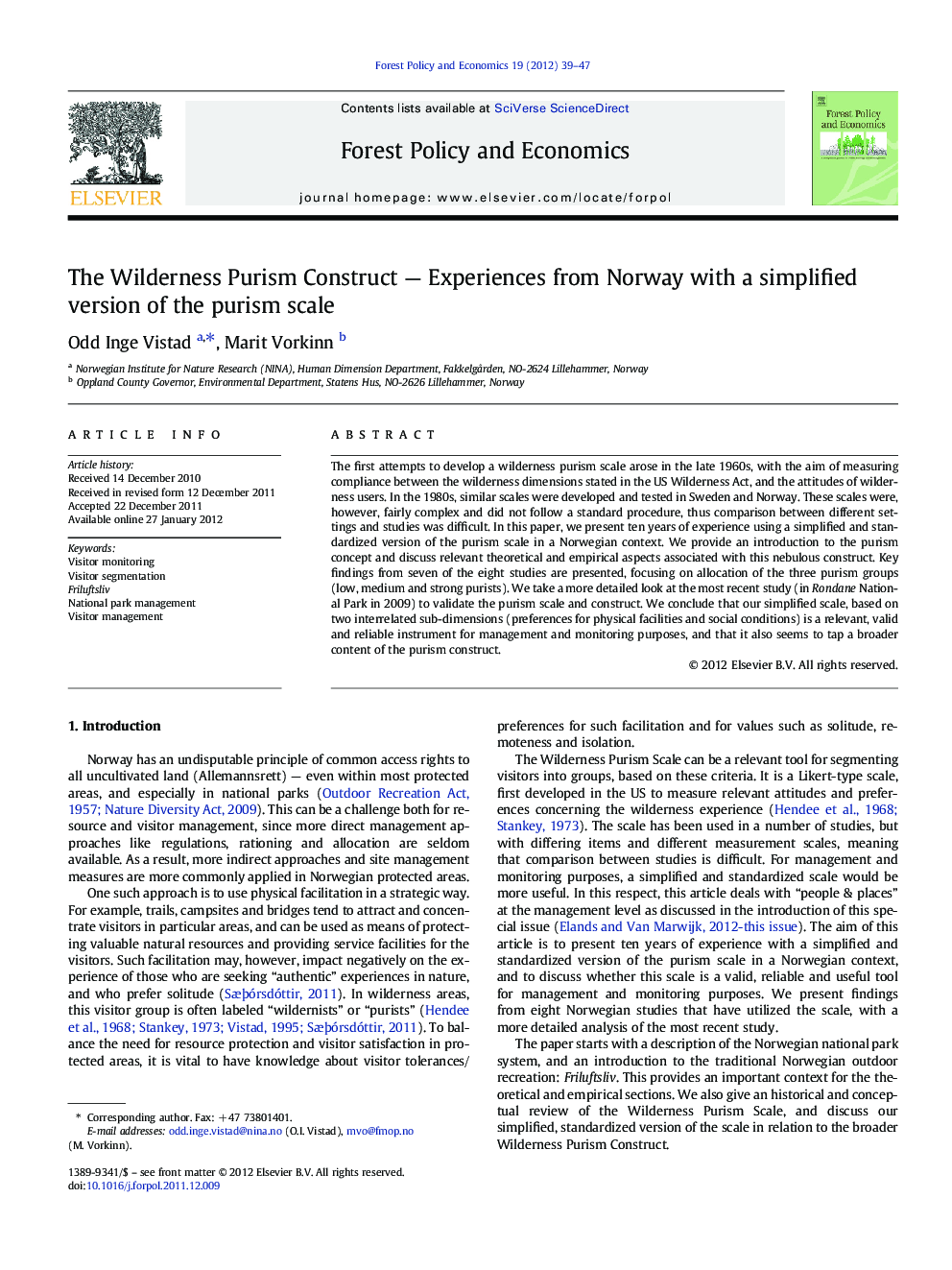| Article ID | Journal | Published Year | Pages | File Type |
|---|---|---|---|---|
| 92082 | Forest Policy and Economics | 2012 | 9 Pages |
The first attempts to develop a wilderness purism scale arose in the late 1960s, with the aim of measuring compliance between the wilderness dimensions stated in the US Wilderness Act, and the attitudes of wilderness users. In the 1980s, similar scales were developed and tested in Sweden and Norway. These scales were, however, fairly complex and did not follow a standard procedure, thus comparison between different settings and studies was difficult. In this paper, we present ten years of experience using a simplified and standardized version of the purism scale in a Norwegian context. We provide an introduction to the purism concept and discuss relevant theoretical and empirical aspects associated with this nebulous construct. Key findings from seven of the eight studies are presented, focusing on allocation of the three purism groups (low, medium and strong purists). We take a more detailed look at the most recent study (in Rondane National Park in 2009) to validate the purism scale and construct. We conclude that our simplified scale, based on two interrelated sub-dimensions (preferences for physical facilities and social conditions) is a relevant, valid and reliable instrument for management and monitoring purposes, and that it also seems to tap a broader content of the purism construct.
► Simplification and standardization of the Wilderness Purism Scale make it suitable for visitor monitoring purposes. ► The Wilderness Purism Scale can be simplified without violating the validity of the broader Wilderness Purism Construct. ► Knowledge about different visitor groups' levels of purism is important for both resource and visitor management.
